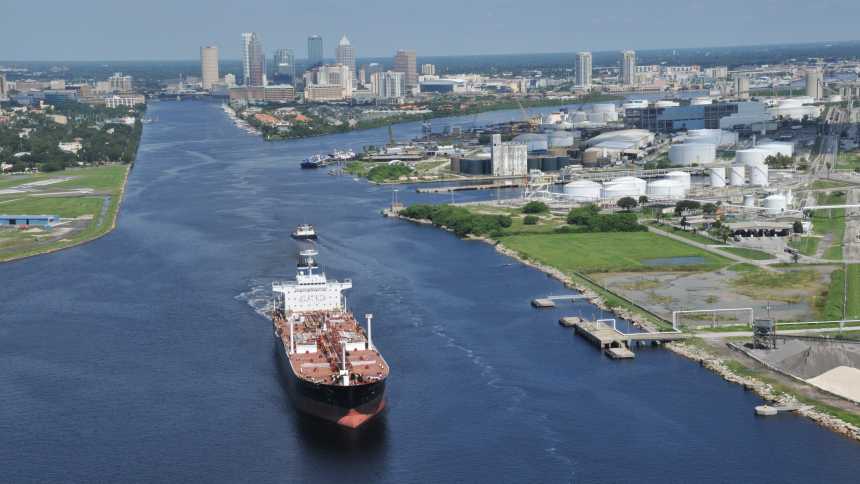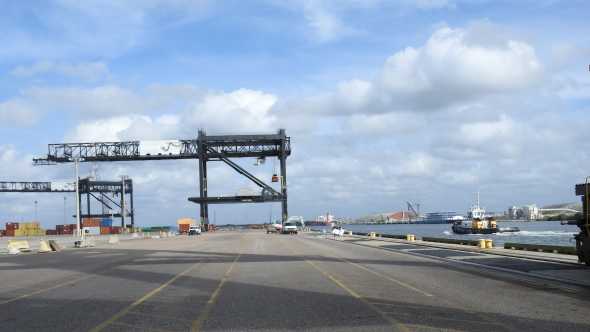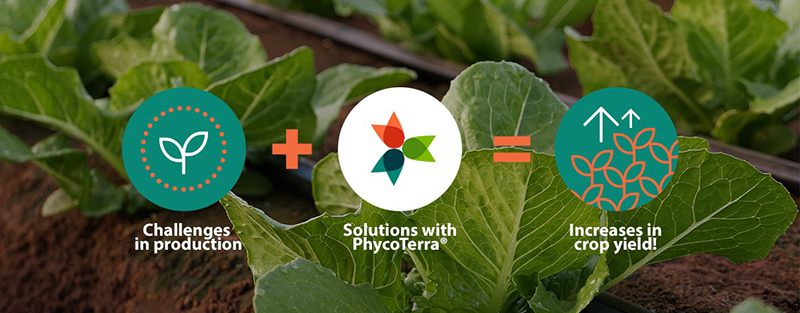Port Tampa Bay Embarks On Big Plans To Meet Rising Tide Of Global Trade

Photo courtesy of Port Tampa Bay
In 1914 the Panama Canal opened its channel for trade, marking one of most emblematic milestones for global commerce in history. In 2007, a $5.25 billion project to expand the canal began, and it will have another historic impact on global trade.
The project is the largest undertaking since the original construction and will create a new lane of traffic along the canal through the construction of a new set of locks, which will double its cargo capacity. In short, when the expansion is completed (now slated for this June), the size of ships that can travel through the channel will double. These massive “post-Panamax” ships, as they are called, will have the ability transport more than 10,000 shipping containers.
The ripple effects of the expansion are being felt across the globe in shipping and trade circles. Florida’s Port Tampa Bay is in the early stages of a $300 million multiphase build-out to capitalize on the opportunities presented from by the widening of the canal. For Florida growers, the Panama Canal and Port Tampa Bay’s expansion has implications as well and port officials are looking to reach out to local producers to find new export opportunities.
Expansion plans include a new 130,000-square-foot on-dock cold storage facility with a capacity to handle more than 400,000 pallets annually. Ground will break in the spring and completion of the facility is expected in 2017.
With the new refrigerated storage facility in place, the port will partner with CSX to establish a Tampa to Chicago Express rail line, which can reach Chicago in 56 hours. The refrigerated box cars can hold three shipping containers.
On the terminal side of the port, currently there are 40 acres available for container off-loading. That area will be quadrupled to 160 acres. Two post-PanaMax gantry cranes have been ordered to load and unload the new larger ships to complement the existing gantry cranes.
The final stage of the build-out is the construction of a food campus that would specialize in food and beverage handling. The facility would allow further processing and packaging of food coming into the port, or of that being exported.
“We believe there is so much opportunity for Florida growers to serve foreign markets, particularly in Latin America, Asia, and elsewhere,” says Wade Elliott, Vice President of Marketing and Business Development for Port Tampa Bay. “We have a good presence in many of these markets already, but we believe we have just scratched the surface.”
Elliott says the addition of the express rail line should provide new market opportunities for local growers.
“We believe the express train service will facilitate both domestic and international business,” he says. “We are excited about the opportunity to give Florida growers expanded access to overseas markets, but also domestic markets with the train.”
Geographically Blessed
There are a number of factors why Port Tampa Bay officials believe the time is right to expand, but high among them is the port’s location. It is the closest full-service port in the U.S. to the Panama Canal. In addition, the Tampa Bay to Orlando I-4 corridor is the largest concentration of distribution centers in Florida, meaning a lot of import and export activity.

Two larger gantry cranes are on order to complement the port’s current container cranes.
Photo by Frank Giles
Another reason port officials believe in investing in new food storage and handling capacity is the fact that many of the distribution centers along the I-4 corridor are food and beverage related. Publix, Winn-Dixie, Gordon Food Service, Sysco International, and Walmart all have centers there among many others. Being near so many distribution centers also reduces trucking costs, saving approximately $1,000 per container when compared to other Florida ports.
Changes to I-4 itself have greatly facilitated truck traffic to and from the port. A dedicated truck ramp off the interstate was opened in January 2014. Before, trucks would exit the interstate and would have to wind through Ybor City to access the port, adding as much as 30 minutes to transit time.
“The dedicated ramp off I-4 was a game changer for the port,” Elliott says. “We have around 10,000 trucks in and out of here everyday. We can spend all this money on getting bigger cranes and expanding the terminal to get these new, larger ships in and out more quickly. But if the cargo backs up by truck traffic, you are not going to be able to serve your shipping costumers. The new ramp takes care of that.”
The Tampa/Orlando area represents a huge local market with a population of more than 8 million people and 62 million visitors annually. Central Florida also represents the 10th largest economy in the U.S. with a GDP of more than $325 billion.
“We are very blessed to have land on the port property to grow and develop new business,” Elliot says. “If you look at our public and private facilities that come under the port’s jurisdiction, it covers 5,000 acres. All of our expansion plans are working on available land we have set aside on the property.”

An artist rendering illustrates the full build-out of the multiphase expansion of Port Tampa Bay.
Image courtesy of Port Tampa Bay
Reaching Out To Agriculture
“Not only is the port near a major food and beverage distribution hub in Central Florida, we also are situated in the heart of the state’s agricultural activity,” Elliott says. “Citrus and juice, tomatoes, and strawberries are all grown right here.”
With the multiphase expansion, port officials hope to bring a better balance of trade between export and import activity.
“Our balance of trade is not as strong on the export side as we’d like it to be,” Elliott says. “So, we are going to encourage growers and manufacturers to look at export markets. The better balance we have with trade, it is a better use of the port’s equipment with loading and unloading.
“The shipping companies also are looking to fill their ships on the way back, so it could present a back haul opportunity for Florida producers. That also could mean the companies might be pricing these transits more attractively.”
Port officials have engaged with the Florida Department of Agriculture and Consumer Services (FDACS) and Florida Fruit & Vegetable Association to investigate ways to reach out to Florida growers. In the spring, the organizations are planning to host an educational seminar for growers to learn about export markets and how to capitalize on the new port expansion.
“The Department regularly conducts trade missions and works trade events in foreign countries to create awareness of Florida agricultural products and generate export opportunities for the state’s producers,” says Aaron Keller, press secretary for Agriculture Commissioner Adam Putnam. “The use of these larger ships in the Panama Canal could improve the ability of Florida agriculture to compete on global markets.”
According to Keller, some recent wins on the trade front include retail promotions in Jin Won supermarkets and Outback Steakhouse restaurants in South Korea. In addition, FDACS is promoting Florida grapefruit and blueberries in Izumi and Okuwa retailers in Japan.
“The long-term vision of our food campus here, the express rail line, and food and beverage cluster of activity is a big part of Port Tampa Bay’s future growth,” Elliott says. “Florida growers have a home here and we want to help them grow and expand their market access around the world.”










